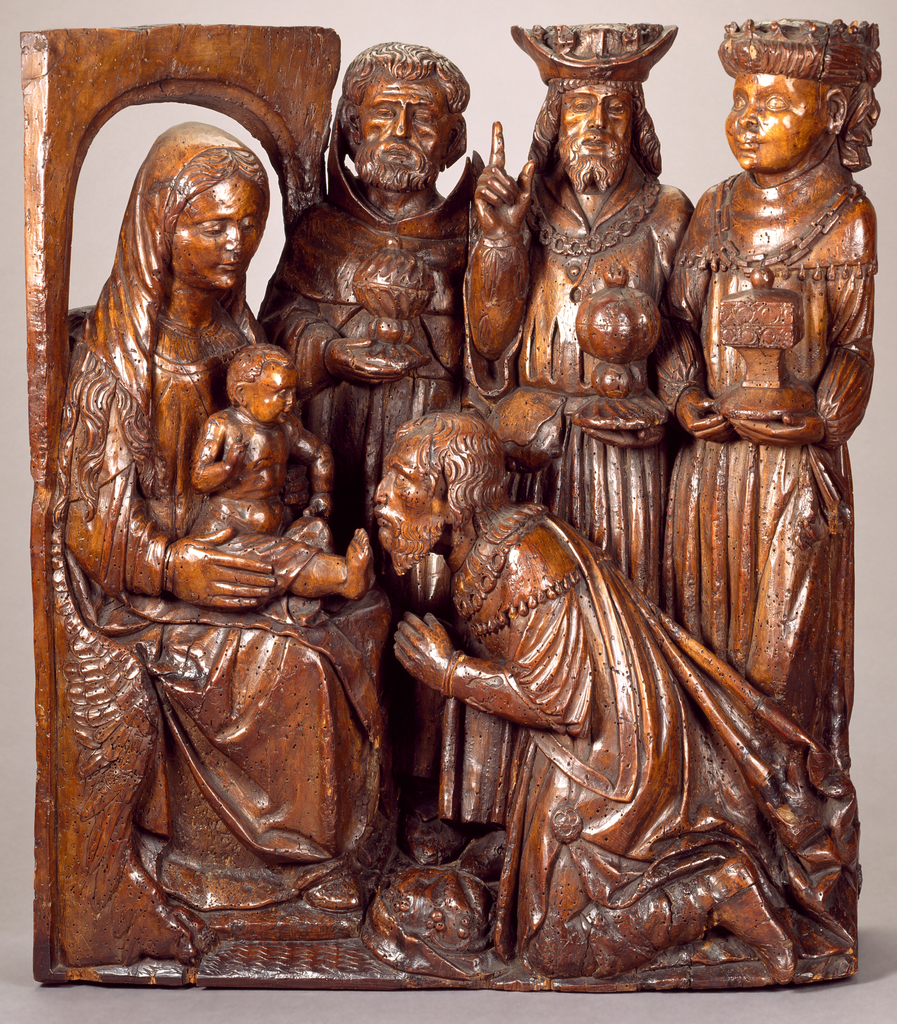“And when they were come into the house, they saw the young child with Mary his mother, and fell down, and worshipped him: and when they had opened their treasures, they presented unto him gifts; gold, and frankincense, and myrrh.” (Matthew 2:11).
This sculpture, probably a product of the Rhine valley in Flanders, portrays the moment described in the passage above from the Bible. January 6th is celebrated as the Twelfth Day of Christmas in western Christian churches, the day of the arrival of the Wise Men at the manger in Bethlehem. Many Orthodox churches, especially in Russia, follow an older calendar in which Christmas Eve falls on January 6th. Regardless of when it is celebrated, the 12 days of Christmas mark the time it took for the Wise Men to reach Mary, Joseph, and the Christ child by following the bright Star of Bethlehem. While almost everyone today might associate gold with the word “precious,” few know what frankincense and myrrh are. Frankincense and myrrh are both derived from tree sap resin and were prized for their fragrance—so much so that they were treated like gold in this scene. Part of a booming trade in the Arabian peninsula and Africa at the time of Christ’s birth, frankincense and myrrh were also prized for medicinal and religious reasons, and were burned for burials and to help prayers rise up to heaven. All this would have been “read” by people who might not have been able to read a word in an early 16th-century church but could certainly understand the story from a detailed, carved scene.
This sculpture may seem out of place in a design museum, but it is not. It shows the rich tradition of highly skilled wood carving in the service of architectural decoration. This piece may have been part of a church, or used as a devotional object, but it certainly had a function. The work also shows the close link that brings prized skills together with objects that are deemed precious, even if the materials aren’t. The composition shows the baby Christ child as the center of bowed attention, with the prized gifts of gold, frankincense, and myrrh held proudly, housed in elegantly carved special pots, each of unique shape, decoration, and design. A figure on the far left with a very Flemish face (unlike the others) appears to be female and may be a life portrait of someone close to the artist. The figure may represent St. Anne, who was not generally held to have been present but often appears in scenes of the Madonna and child, or a member of the family that donated or commissioned this piece. This figure holds one of the precious pots while the first of the venerating wise men kneels down. He, like the others, is dressed in the costume of his age and geography rather than imagined historic garb; he appears as a knight, with possibly some armor under his cloak. All these details are created out of walnut by a very skillful artisan.
